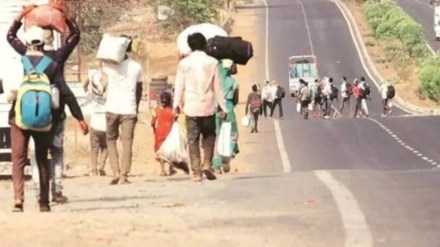By Debashis Acharya
India’s poverty rate for 2022 stands at 5.25% against 27.12% in 2011, per the latest World Bank estimates. The upward revision in the global poverty line along with India’s updated consumption data resulted in the big drop in poverty figures, explains Debashis Acharya
Changes in the World Bank data
The international poverty line — also called the extreme poverty line — has been revised from $2.15 to $3.00 a day. The poverty lines applicable to lower-middle and upper-middle income countries have been revised from $3.65 to $4.20 a day, and from $6.85 to $8.30 a day, respectively. The Poverty and Inequality Platform (PIP) database includes 74 new country-years, with over 2,400 survey year observations from 172 economies. The major changes include three aspects of the PIP data, i.e., new survey data for several country-years, adoption of the 2021 purchasing power parities (PPPs) and including new national poverty lines based on the new PPPs and new data. These revisions estimate the global extreme poverty rate at 10.5%, with 838 million individuals living below the international poverty line. Incorporation of new data from India’s Consumption Expenditure Survey 2022-23, adoption of the 2021 PPP and the new poverty line of $3.00 a day have changed the country’s poverty figures. Thus, India’s poverty rate for 2022 stands at 5.25% against 27.12% in 2011, showing a significant fall in the number of people living below the new poverty line.
How international poverty lines are estimated
Countries define their national poverty lines to find the number of people living below the poverty line, i.e. the number of poor, based on their own assessments/measurements of poverty and what it means to them for someone to be called poor.
The World Bank uses the median national poverty line, in PPP terms, within the respective income group of countries to derive the global poverty lines. The PPPs convert different currencies to a common currency and equalise their purchasing power by eliminating the differences in price levels between economies. The recently released estimates of global poverty lines by the World Bank use the year 2021’s PPPs released in May 2024 by the International Comparison Programme.
How different regions fare in poverty reduction
The South Asia region witnessed the most significant decline, with its poverty rate dropping to 7.3% in 2022, whereas the rates for all the other regions see an upward revision. Even the nowcasted estimates indicate that South Asia is expected to see a drop in poverty rates up to 4.8% by 2025. Sub-Saharan Africa’s poverty rate is revised to 45.5% of the population, where two-thirds of the global extreme poor live. The studies and analyses by the World Bank group based on the revised poverty estimates point towards the fact that one in ten people struggles financially to meet basic needs of food, clothing, and shelter today. At this rate, the Sustainable Development Goal(SDG) 1.1.1 of eradicating extreme poverty is difficult to achieve by 2030.
Effect of revised estimates on India’s poverty data
India’s new data from the Household Consumption Expenditure Survey (HCES), 2022-23, used by the World Bank in updating the poverty estimates, has majorly contributed to the drop in poverty rates in the South Asia region. The revised estimates are also attributed to the HCES’s ( 2022-23) shift to the modified mixed reference period from the uniform reference period in line with the global best practices. Under Modified Mixed Recall Period (MMRP), the respondents are asked to recall and report purchases over realistic recall periods. The recall period for food and frequently purchased items is 7 days or 30 days and that for infrequently purchased items is 365 days. Thus, the shift to MMRP could capture actual consumption better, resulting in declined poverty estimates.
NITI Aayog’s multi-dimensional poverty index
The most recent discussion on national poverty estimates was seen in the NITI Aayog’s discussion paper on multi-dimensional poverty in India. The headcount ratio of multi-dimensionally poor dropped to 11.28% in 2022-23 from 24.85% in 2015-16. The multi-dimensional poverty index (MPI) estimated by NITI Aayog is in line with the MPI published by the UNDP. It has three equally weighted dimensions: health, education, and standard of living. The Economic Survey 2023–24 highlights that India is well on track to achieve the Sustainable Development Goal of halving multidimensional poverty well before the 2030 deadline.
The writer is a professor at the School of Economics, University of Hyderabad.
Disclaimer: Views expressed are personal and do not reflect the official position or policy of FinancialExpress.com. Reproducing this content without permission is prohibited.
